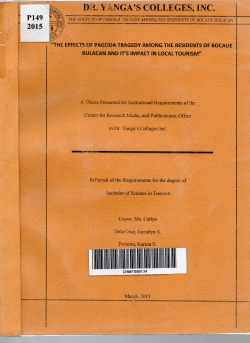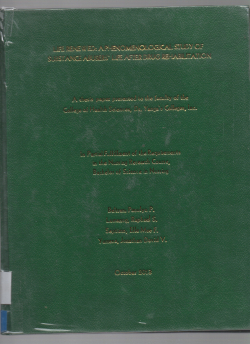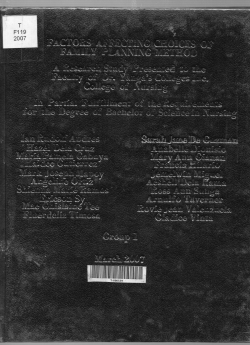LIVING WITH THE DEAD: A Portrait of Life of Families Residing in Public Cemeteries in Bulacan

Type
Thesis
Category
CHS
[ Browse Items ]
Subject
phenomenology
Abstract
Families living in public cemeteries are considered to be homeless. Communities of grave afraid of the place they considered home. According to Asian Development Bank report of people who chose to live among the dead do so for religious or economic reasons. Some embrace death as part of their religion and rely on human remains for ritual and food. For others, living in the grave is their last resort to live decently even others are (2011) cemetery's inhabitant rank among the poorest of the poor in Manila, a capital where roughly 43% of the city's 13 million residents live in informal settlements. The researchers utilized a descriptive phenomenological approach by Amedeo Giorgi to capture essences of life of families living in public cemetery. Purposive and convenience sampling were utilized by the researchers in order to identify subjects in addition to satisfying the set criteria such ass presently living in a public cemetery along the towns I Bulacan for at least five years, interviewee must be the head of the family, who do not Guided by the principle of data saturation, there were five informants who satisfied the set criteria. Letter of intent and consent were secured. A set of formulated questions was used as a guide the interview process. Along with it, audio recorders were used as a tool together with personal observations and field notes. After interviews were made and transcribed verbatim, significant statements were extracted and analyzed according to Giorgi's framework and eventually formed as a common emerged theme Results are reflected in an acronyms RIP which best represents the life of families living in a cemetery. These include, Ratiocination principles which highlight the adverse aspect and Complimentary moment of families living in pubic cemetery, The advent of the issues on housing, people resort of living in slums and chose to be homeless due to overpowering factors of society. Infirmity Outcome emphasizes the sociological 1SSues. real life distress/stressors, physiologic predicaments which translates to the risk of being a homeless family. Pliant Motivation indicates the spiritual mindedness and familial reinforcement this supports the idea that the informants have their own motives to survive in daily living not just because of the personal beliefs but also how their culture affects them on their way of living. Central to the phenomenon of "living with the dead" 1S somehow terrifying for those people who never experience to live in the people living in a cemetery consider it as a safe haven for living despite the notion that it is a place for resting souls. The researchers therefore conclude that family is looking for a resettlement and alternative housing location that is accessible and affordable for them to stay, allowing them to support their family's needs. Also the salary they earned inside the cemetery are an important reasons why they stay there. psychological stressors of being stigmatized for being settlers of the cemetery have contributed to mental issues. The effect to their health conditions being residents of public cemetery is disregarded by most families, Family motivation and strengthened spirituality help them face the challenging events and hindrances of the cemetery environment.
Number of Copies
1
| Library | Accession No | Call No | Copy No | Edition | Location | Availability |
|---|---|---|---|---|---|---|
| Main | 61511 | T L785 2017 | 1 | Yes |




